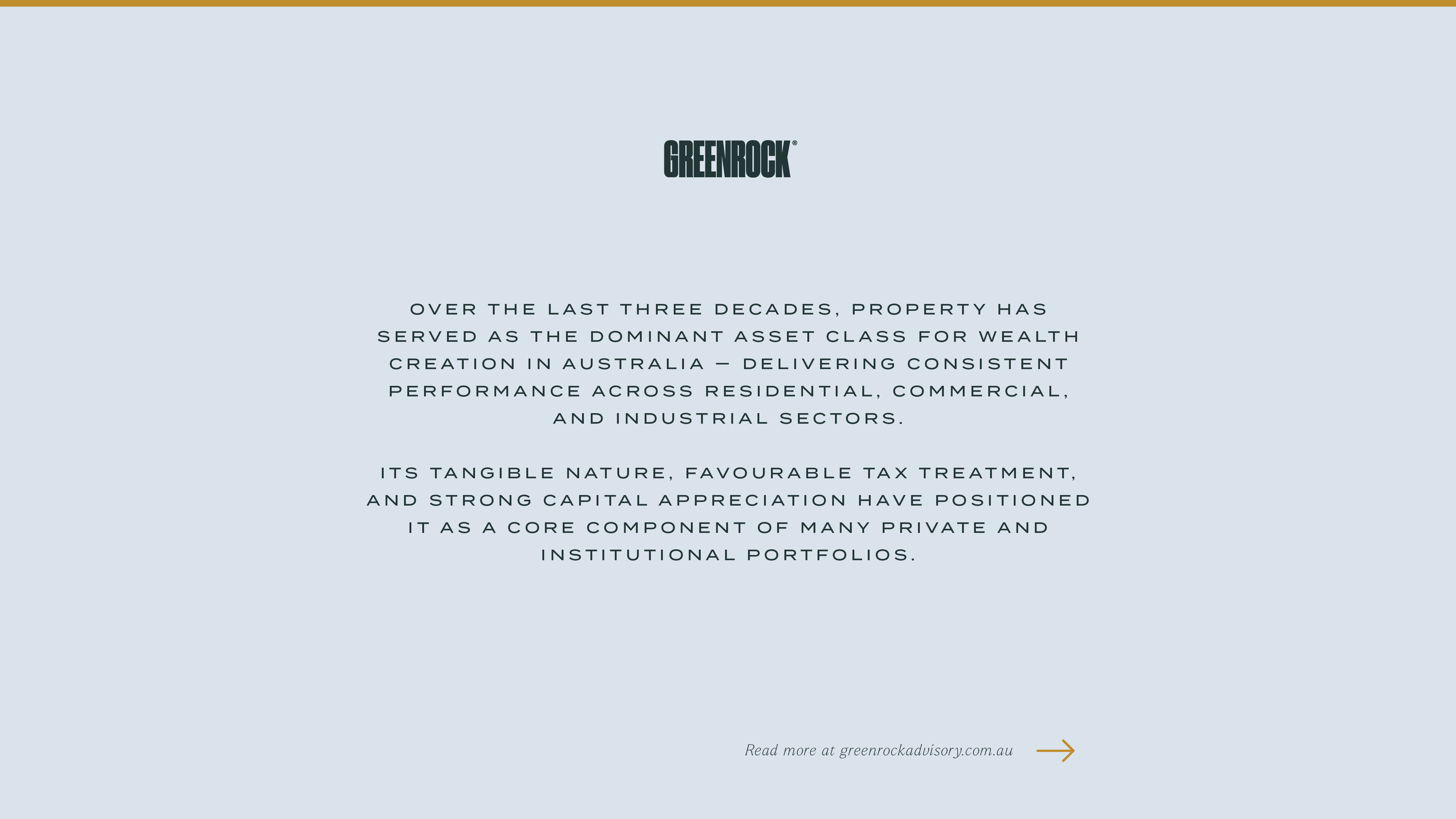FEATURED INSIGHTS
Our professional ecosystem streamlines your JOURNEY BY partnering with industry leaders.
Over the last three decades, property has served as the dominant asset class for wealth creation in Australia — delivering consistent performance across residential, commercial, and industrial sectors.

Its tangible nature, favourable tax treatment, and strong capital appreciation have positioned it as a core component of many private and institutional portfolios.
However, as the economic and demographic landscape continues to evolve, so too must the conversation. In a rising interest rate environment, with real wages under pressure and affordability constraints persisting, it is timely to reassess: Is property still the optimal pathway to wealth creation? And what does the next evolution of this strategy look like?
Capital Growth vs Yield: A Structural Shift in Investment Strategy
One of the most misunderstood aspects of real estate investment is the tension between income yield and capital growth. While residential investors often gravitate toward high-yielding assets in regional or secondary markets, these opportunities can underperform in terms of total return when capital growth is limited.
Historically, capital growth has been the primary driver of net wealth accumulation. The ability to recycle equity — via sale, refinance or reinvestment — creates compounding opportunities that yield-oriented assets typically cannot match.
Many investors are shifting their focus from short-term rental returns toward strategically located, high-growth assets with long-term development potential or intrinsic uplift — particularly in infill metropolitan locations and growth corridors.
Wage Growth vs Asset Inflation: A Growing Disparity
Australia is experiencing a structural decoupling between wage growth and asset inflation. While median wages have increased modestly over the past two decades, the growth in land values, residential housing, and commercial assets has been exponential — particularly in supply-constrained urban markets.
This trend has significant implications. Labour-based income alone is no longer a reliable path to intergenerational wealth. Instead, the accumulation of appreciating assets — particularly real assets — is becoming essential.
This has contributed to renewed interest in property as both an inflation hedge and a long-term capital growth vehicle, particularly within private wealth structures such as SMSFs and family offices.
The Role of Commercial Property in the Modern Portfolio
Commercial property is becoming an increasingly important allocation for high-net-worth investors, driven by its income security, scalability, and potential for value creation. Key advantages include:
Stable, long-term income via structured lease profiles
Diversification across asset classes (industrial, healthcare, mixed-use, etc.)
Attractive depreciation and tax efficiency under current legislation
Opportunities for uplift through repositioning, strata titling, or development approvals
As regulatory risks in residential markets increase, many investors are turning toward small-scale commercial and development-ready assets, with a focus on zoning optimisation, holding structures, and long-term flexibility.
Strategic Investment Requires More Than Acquisition
In the current environment, property investment must be approached as part of a broader, multi-layered strategy. The ability to identify undervalued locations, understand planning frameworks, and navigate financing structures is now critical.
The future of property as a wealth-building vehicle will not be defined by access alone, but by execution — how assets are selected, structured, managed, and ultimately transitioned into broader investment portfolios.
Our professional ecosystem streamlines your JOURNEY BY partnering with industry leaders.

The Year To Invest - Are You Ready For 2025
14/1/25
Now is the perfect time to plan your next move

Commercial property Investing
1/8/24
Have you been considering investing in Commercial Property?

Addressing Australia's Housing Crisis through Sustainability and the Circular Economy
18/6/24
Copyright © 2023, All Rights Reserved. DESIGNED & Developed By ACMEmedia.com | Studionascent.com